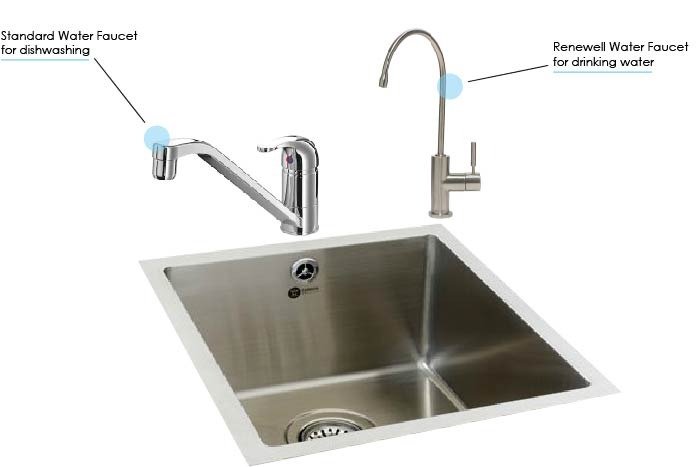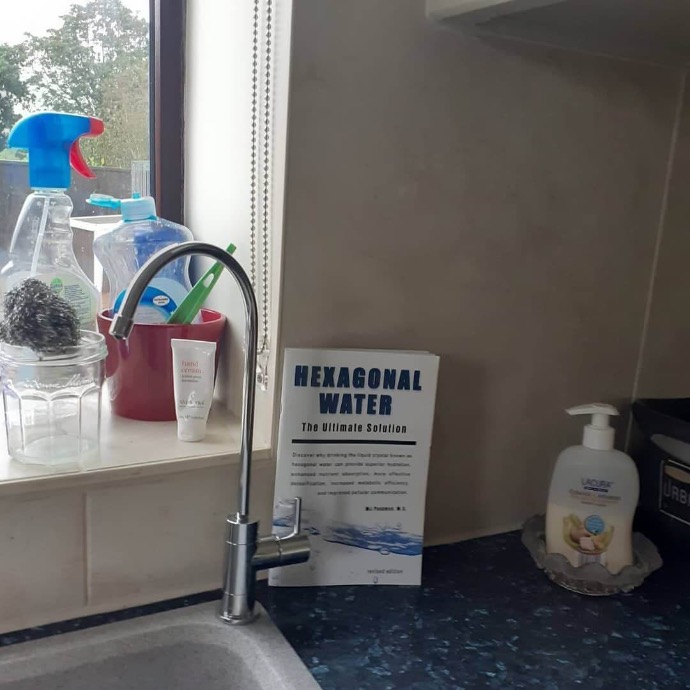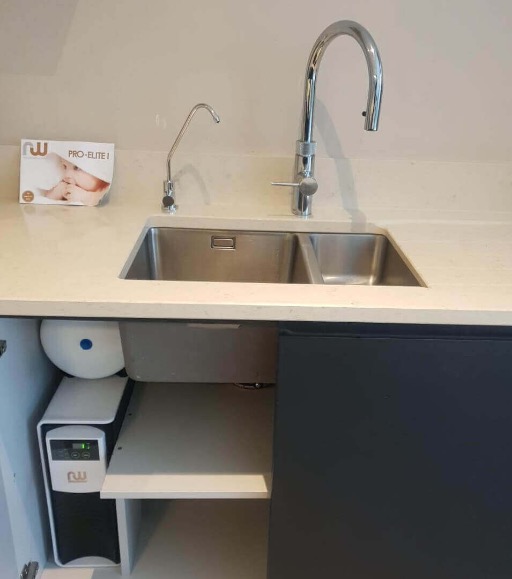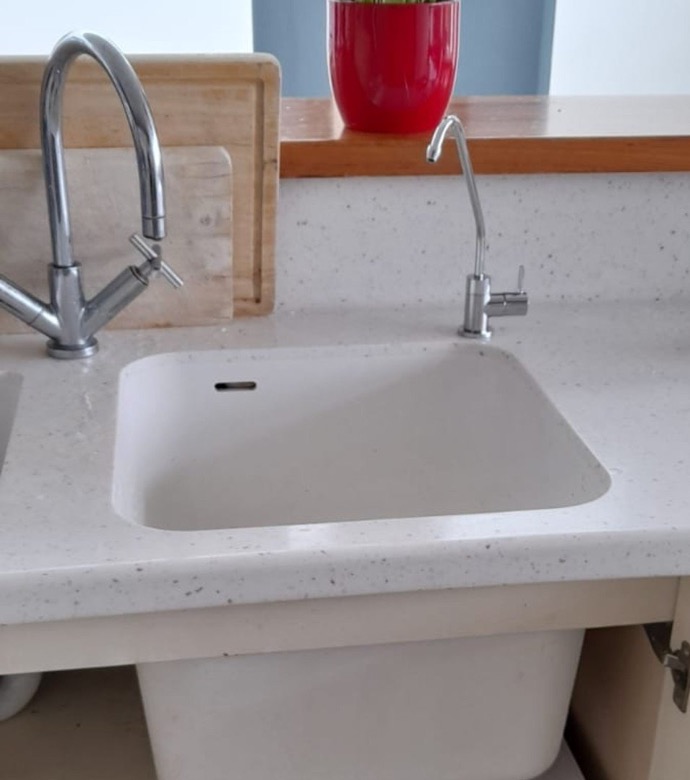A great feature of an under-sink Reverse Osmosis water filtration system is that it comes with its own faucet. Your regular kitchen sink faucet can be used for washing dishes and cleaning while the separately installed RO faucet can be used for drinking water, cooking with purified water, and rinsing glasses clean.
A great feature of an under-sink Reverse Osmosis water filtration system is that it comes with its own faucet. Your regular kitchen sink faucet can be used for washing dishes and cleaning while the separately installed RO faucet can be used for drinking water, cooking with purified water, and rinsing glasses clean. Remember, RO water is softened water, even though there may not be a water softener installed in the house water line. That’s a great perk to keep your glasses free from hard water spotting!
Another important detail is that the supply of water available for use equals the water volume in the RO pressure tank. The flow rate of the faucet is approximately 1 gallon per minute. This means the water can run out in three minutes if you have a three-gallon RO tank and you fully open the RO faucet. You would need to wait until the RO processes fresh, filtered water and the tank pressurizes again. It typically takes a three-gallon tank about one hour to fully replenish with purified water. This is assuming the RO has a 75 gallon per day (gpd) membrane.

Many think that the RO system plumbs directly to the regular kitchen faucet. Though this seems simple enough, and you can find fittings in the local hardware store to do this sort of plumbing, there is one major issue. The water flow and pressure will be too low. A regular sink faucet operates best at 2.5 gallons a minute (GPM) flow. In comparison, an RO faucet needs 1 GPM flow released by the RO tank.
Installing a Regular RO Faucet that came with the Reverse Osmosis Filter System
An RO faucet should be positioned to consider its function and general appearance in your kitchen. You may need to drill a hole beside the kitchen faucet for the RO faucet. At times you may find a plugged hole along a granite countertop that is not used for anything, but this is rare. You can use that hole for the RO faucet if you have enough clearance from the regular faucet. If the soap dispenser or spray hose holes are not in daily use, those can potentially be used for the RO faucet.
The RO faucet requires a hole size on the sink (or countertop) that is at least 7/16” in diameter. However, the RO faucet can fit in holes up to 1 ¼” in diameter. Most sinks require a special drill bit that’s specific to the material being drilled. Use masking tape to cover and surround the area to help protect the drilling site from damage.
PERSONAL PROTECTIVE EQUIPMENT:
Wear safety glasses to protect your eyes. Wear adequate respiratory protection to prevent inhalation of irritating or dangerous residue.
Install the faucet firmly, but do not overtighten. If using a faucet adapter, tighten the adapter on the faucet shaft no more than ¼ turn past hand tight.
Replacing Your Regular Kitchen Faucet and Installing a Triple Faucet
Another option exists if you don’t have an extra hole in the countertop or simply do not want to drill an extra hole. We call it a triple faucet. It is also known as the 3-way faucet. This will replace your regular kitchen faucet used for washing pots, pans, and dishes. A triple faucet has water lines for cold, hot, and filtered water. Literally, a three-in-one solution! This typical pull-down type triple faucet has 3/8” hot/cold lines and a ¼” (also includes 3/8” adapter) filtered water line commonly used on RO systems. The triple faucet will allow fast flow rates like 2.5 GPM for washing with hot and cold water. A separate part controls the slow flow rate of reverse osmosis water at around 1 GPM. A triple faucet saves space over the traditional separate faucet.



Do You Need A Special Faucet For Reverse Osmosis?